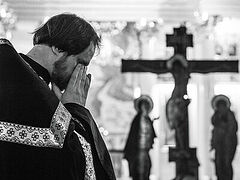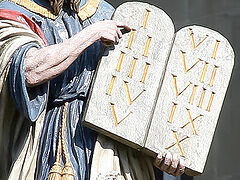The development of a Christian Heart. Aesthetical feeling. The relationship between Christianity and aesthetics. The relationship between beauty and morality.
 Photo: V,Khodakov / expo-pravoslavie.ru
Photo: V,Khodakov / expo-pravoslavie.ru
Let us continue now to the question of the development of man’s heart.
As we have already stated, a heart is the faculty of feeling pleasantness and unpleasantness. These feelings are of various kinds, ranging from the lowest, organic (i.e., sweetness, bitterness, roughness, etc.) to the highest feelings (aesthetical, ethical, religious, etc.). These highest feelings are also called emotions. The cultivation of man’s heart is based precisely upon the development of these emotions. Let us examine one of them, the feeling for aesthetics.
The aesthetical feeling is a feeling for beauty, man’s faculty to see and understand, to admire and be enraptured by any beauty, by everything beautiful, where and in whatever form it presents, itself. This admiration, of beauty may become a stormy, fiery ecstasy (i.e., the ode in poetry, “You, Our God, we praise” in liturgical music); it may be transformed into a quiet, calm, deep feeling (i.e., the elegy or the idyll in poetry, “Gentle Light” in the divine service). The aesthetical feeling is thus indissolubly tied to the idea of the wonderful, to the idea of the beautiful.
Thus the question raised is: What is beauty?
This question may be answered in various ways. The best answer is acknowledged to be the following: Beauty is the full correspondence between the content and form of a given idea. The more sublime the content of the idea, the purer, more salient, and perfect is the form in which that idea is transmitted, the more beautiful and wonderful it will be. Christianity, of course, sees the highest beauty in God, as the fulfillment of every kind of beauty and perfection.
The aesthetical feeling is present in every person to a certain degree, but is far from always being properly developed to the fullest extent. Its proper development and direction occur through the discovery of our capabilities in correctly appraising one or another manifestation or piece of art. An aesthetically educated person will be able to find the characteristics of perfection and beauty in a good painting, musical composition, or literary work. He will be able to understand and appraise and explain to another what exactly is beautiful in a given work of art, what is its content, and in what form it is transmitted.
Christianity can appreciate and love beauty. We see beauty everywhere in Christianity: in its churches, in its divine services, in its music of Church singing, and in its painting, iconography. It is remarkable that the beauty of nature was loved and appreciated by some of our strictest ascetics, who had fully rejected the world. That is the way it was in ancient times (St. Basil the Great and other holy Fathers), and that is the way it is in our Russian Orthodox Church. All the best Russian monasteries were founded in areas famed for their beauty, attracting the saintly founders and ascetics of monasteries to these areas, enrapturing all the pious and pilgrims without exception.
That is the way the radiant soul of Christianity manifests itself in relationship to everything truly wonderful. In the Hew Testament we see how Christ the Savior behaves towards the field lily and towards the heavenly birds and towards the fig tree, the grapevine. Even in ancient pre-Christian times., the holy King and prophet David, reflecting upon the beauty and greatness of God’s creations, exclaimed,
“You created everything with wisdom—Glory to Thee, Our Lord, Creator of all…”. In other psalms, addressing nature as if alive and possessing consciousness, he said, “Everything that has breath praises the Lord… praise His sun and moon, praise His stars and light…”
Christianity recognizes only the truly wonderful, that which not only flatters our feeling for beauty with exquisiteness of form, but also what is morally worthy and of good quality. True beauty is always exalting; it ennobles and enlightens the human soul, it puts an ideal of truth and goodness before itself. A Christian never considers an image or work of art, however perfectly executed, as beautiful—if it does not purify or enlighten the soul, but rather vulgarizes and soils the soul…









